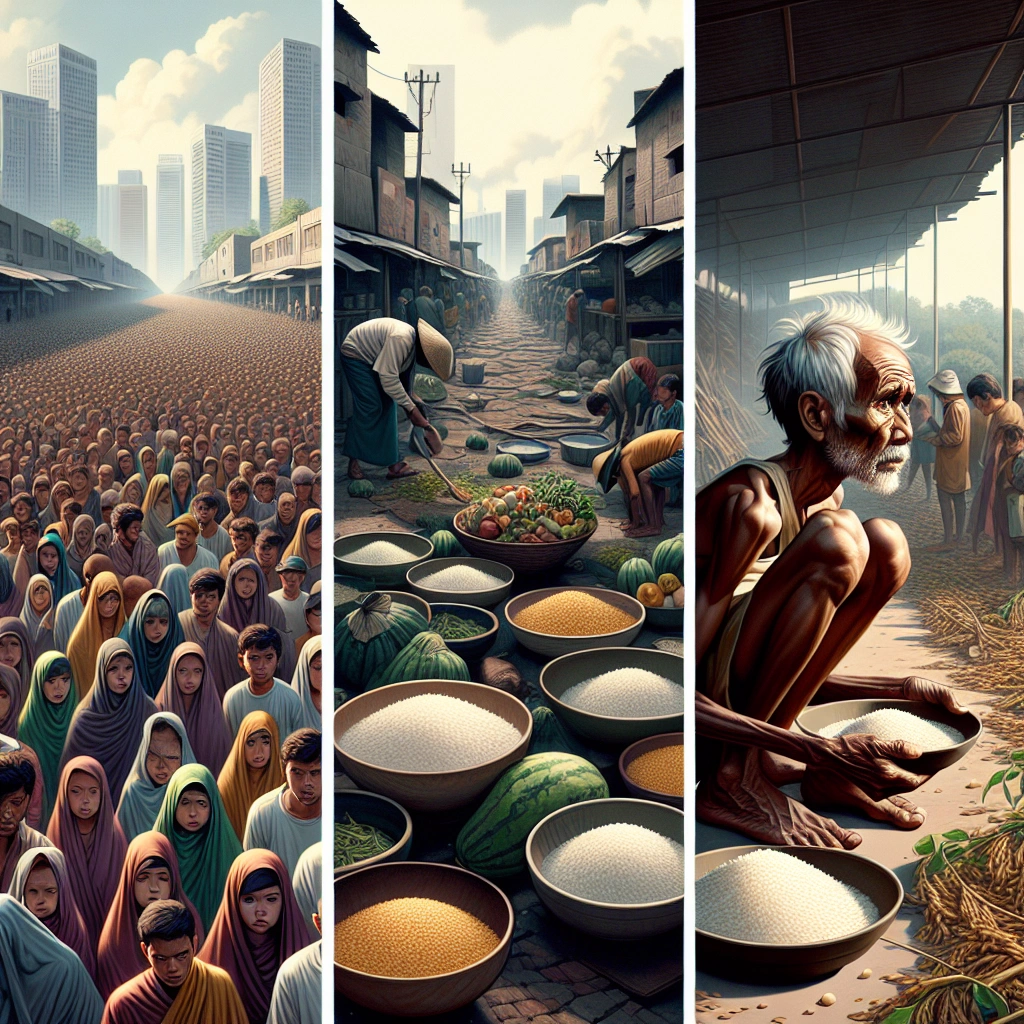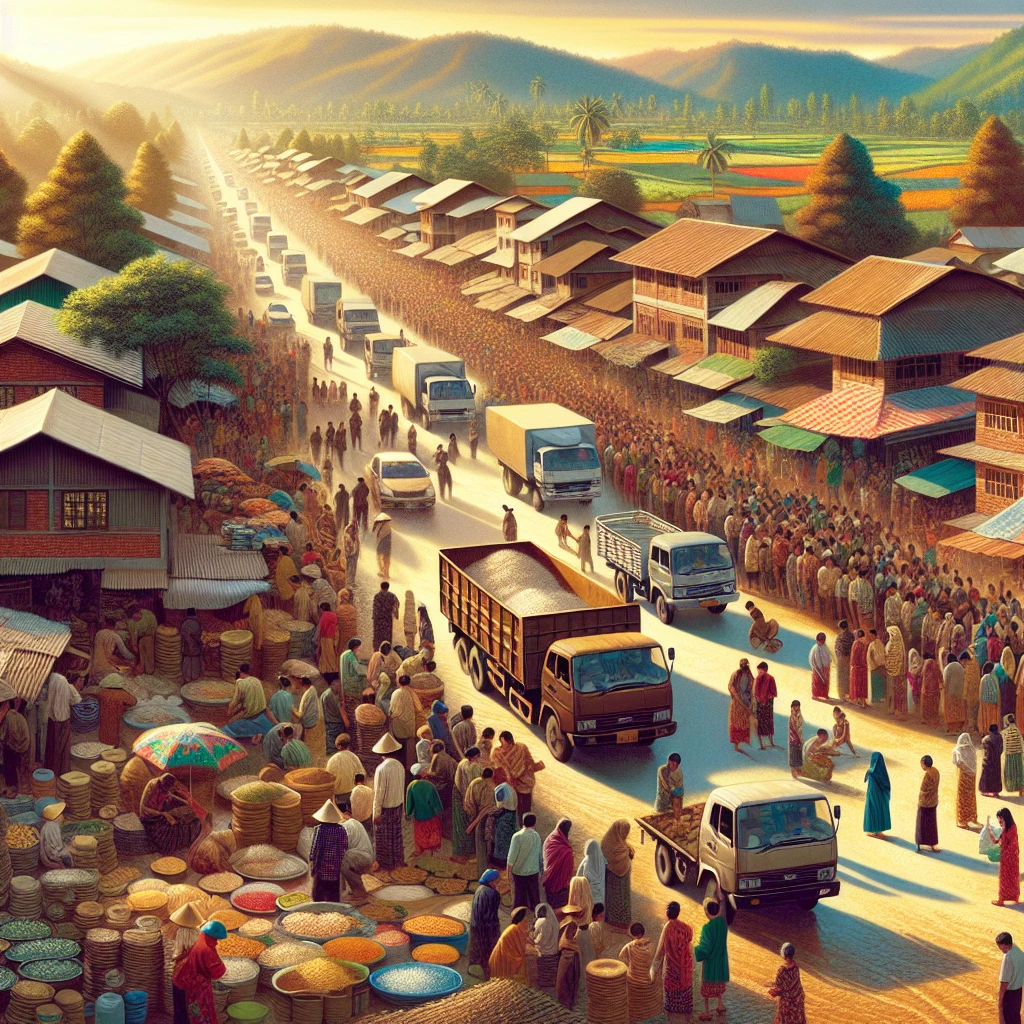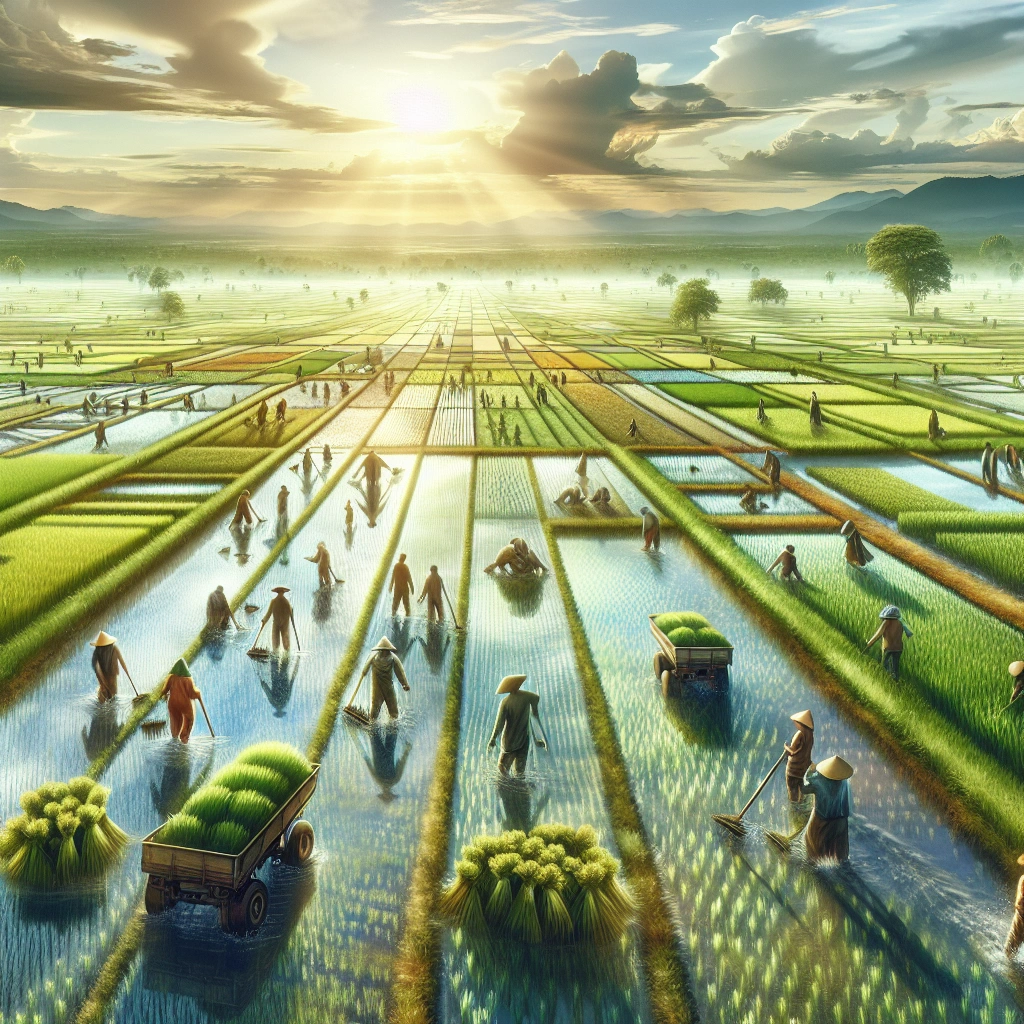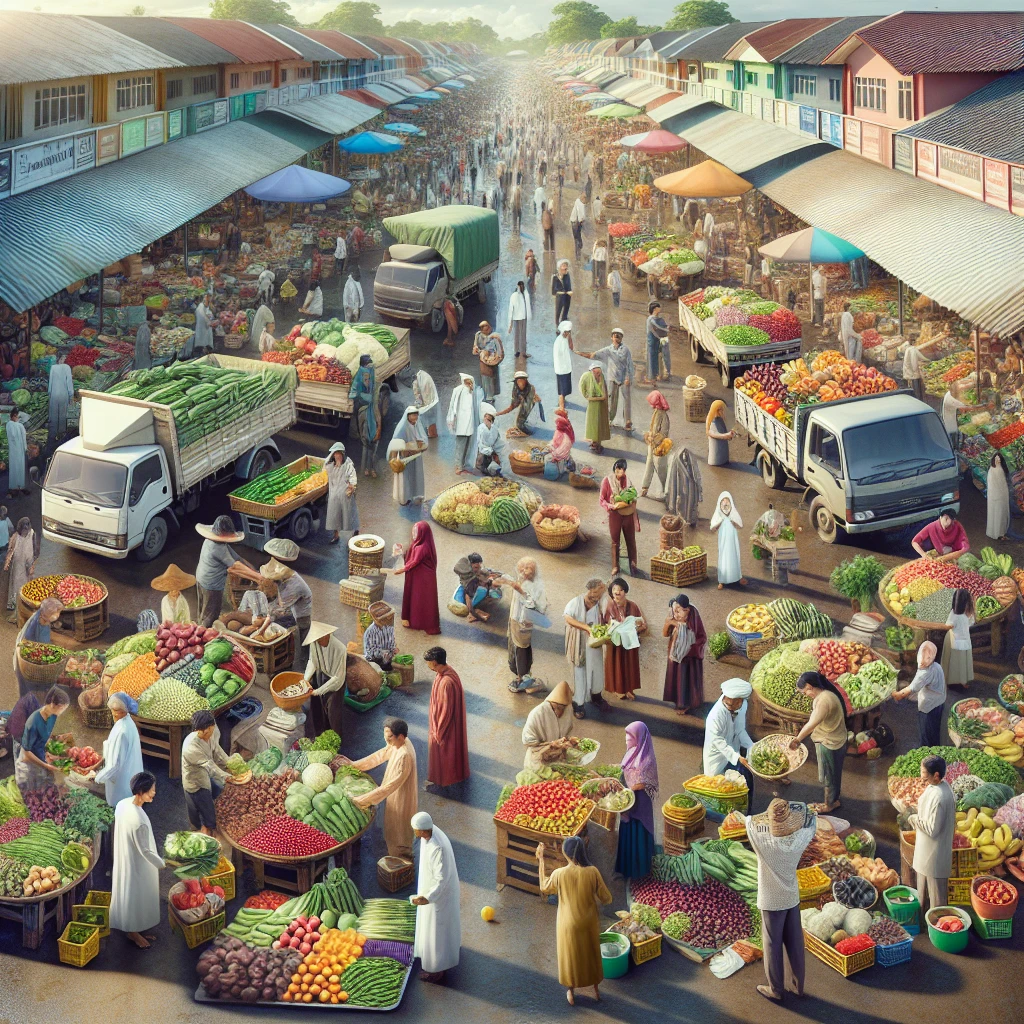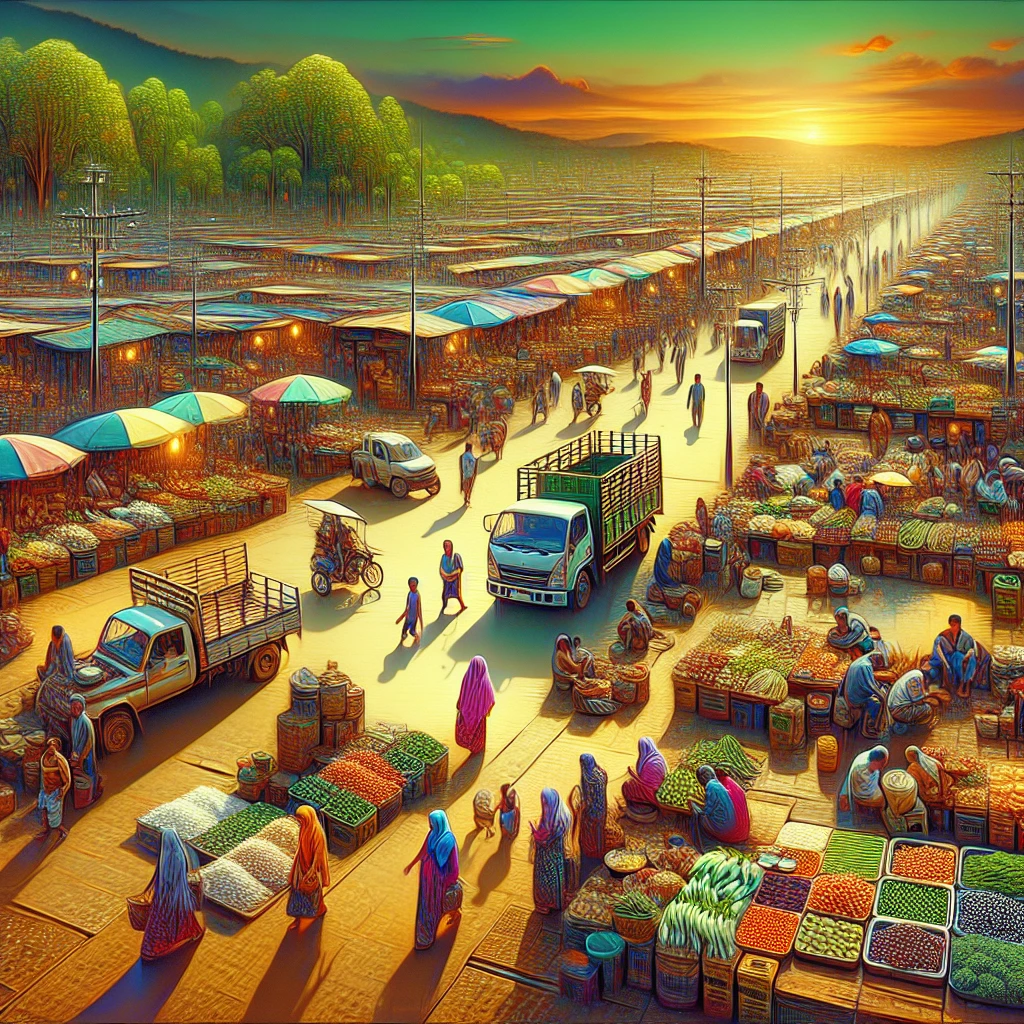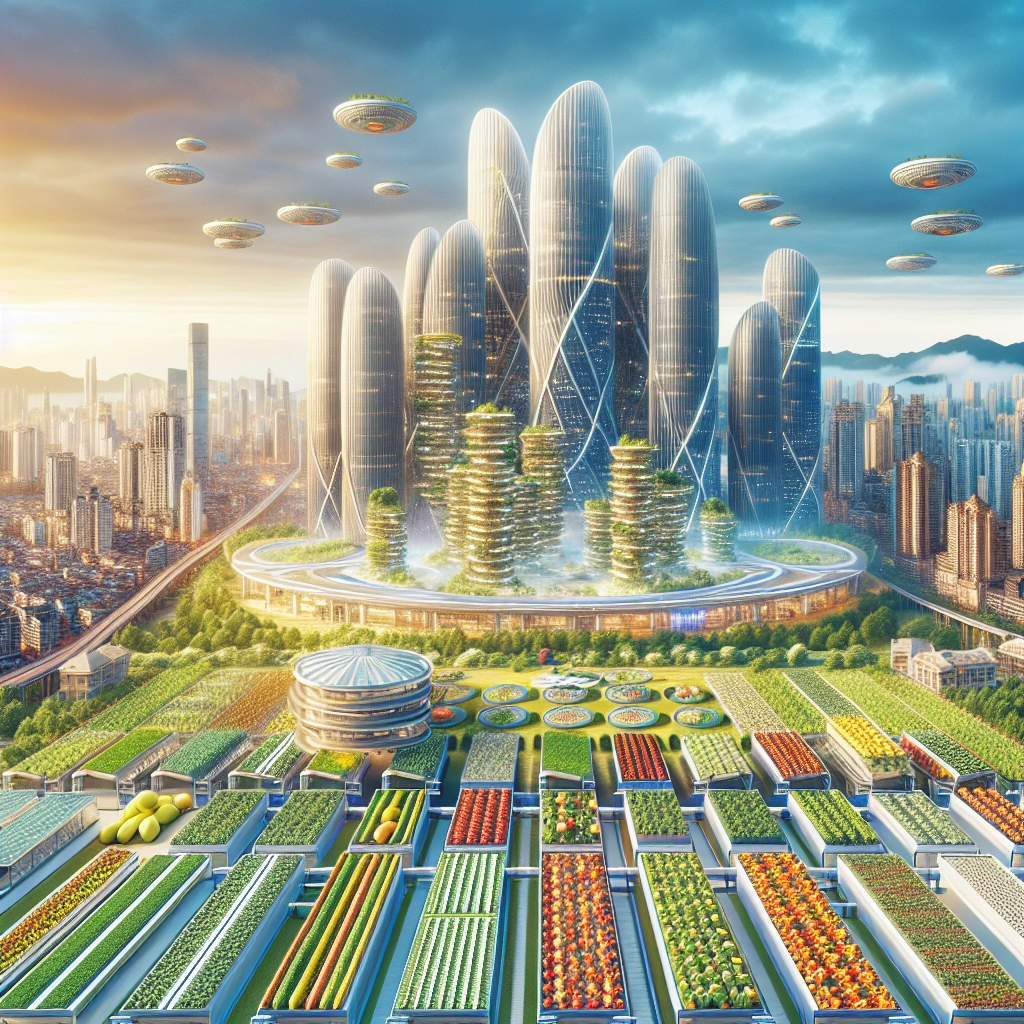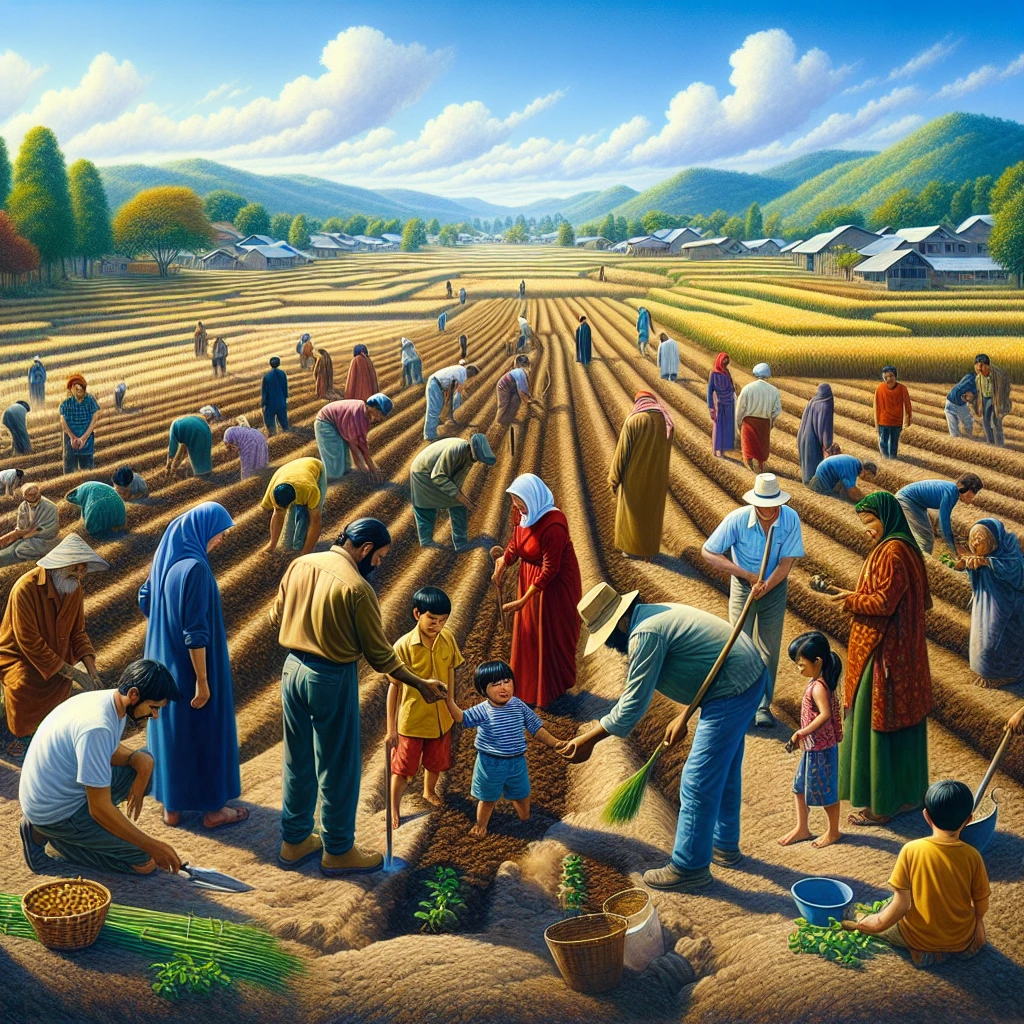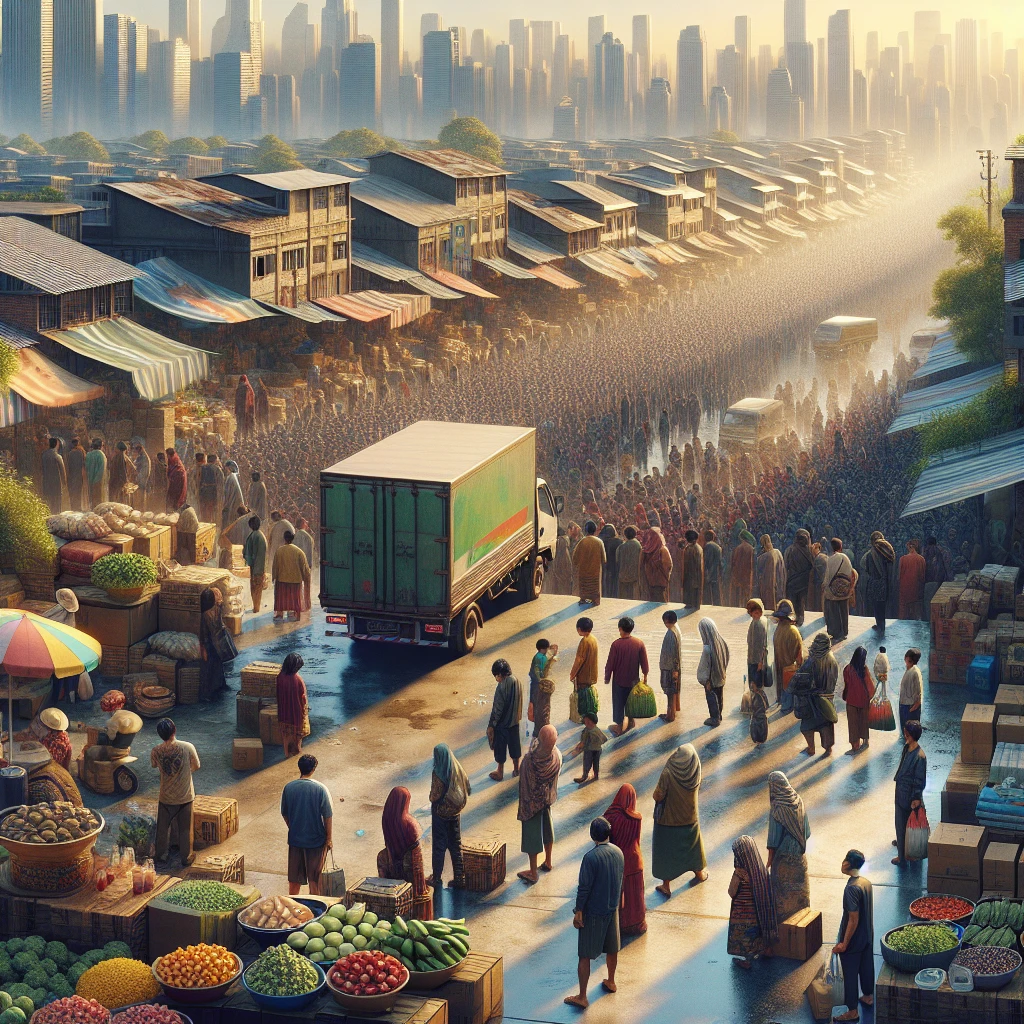

The food crisis in Asia refers to the ongoing struggle to ensure a sufficient and stable supply of food in the region. It is a complex issue influenced by a variety of factors, including higher food prices, supply chain disruptions, devalued currencies, and limited resources to address social and economic demands.
The impact of the food crisis on the Asia Pacific region has been substantial, leading to increased food insecurity and malnutrition. This has been exacerbated by the COVID-19 pandemic, extreme weather events, and other challenges.
The situation has worsened, with millions more people becoming acutely food insecure in the past year.
The pre-existing food security and nutrition situation in Asia and the Pacific was already discouraging, with stalled progress in reducing undernourishment and high prevalence of certain nutritional indicators. The global food crisis has further exacerbated these challenges, calling for urgent action to address food insecurity in the region.
Check out this Youtube video: If you want to gain a deeper understanding of the food crisis in Asia and the efforts being made to address it, watch this insightful video about USAID’s $260 million commitment to the cause.
Factors Contributing to the Food Crisis in Asia
Environmental Factors
- Rising ground-level ozone levels from industrial emissions and fossil fuel usage in East and South Asia are leading to significant crop yield losses, exacerbating the food crisis.
- Climate change is disproportionately impacting the most vulnerable populations in Asia, resulting in decreased crop production and changes in food security.
Economic Factors
- Speculation in food stocks, extreme weather events, low cereal stocks, and competition for cropland due to biofuel growth are key factors contributing to the food crisis in Asia.
- Declining agricultural productivity, overexploitation of natural resources, and increasing water scarcity are crucial concerns affecting the food supply in the region.
Political Factors
- Policies leading to under-investment in agricultural research and emergency mitigation have contributed to the rise in staple prices, aggravating the food crisis.
- The protracted conflict in Ukraine and the global food crisis are exerting substantial impacts on food security and nutrition in countries across the Asia Pacific region.
| Environmental Factors | Economic Factors | Political Factors |
|---|---|---|
| Rising ground-level ozone from industrial emissions | Speculation in food stocks and competition for cropland | Under-investment in agricultural research |
| Climate change impact on crop production | Declining agricultural productivity and increasing water scarcity | Impact of the protracted conflict in Ukraine |
Impact on Food Security
Food crisis in Asia has led to a significant increase in hunger and malnutrition, especially among vulnerable populations such as children and low-income families. Limited access to nutritious food has resulted in severe consequences, including stunted growth in children and micronutrient deficiencies in adults.
The lack of adequate food has also contributed to the rising prevalence of obesity amongst adults, further exacerbating the health implications of the food crisis in Asia.
The health implications of the food crisis in Asia extend beyond malnutrition, impacting individuals with increased risks of chronic diseases and other health conditions. Research has indicated that food insecurity is associated with higher rates of chronic diseases in low-income, food-insecure adults, presenting a profound challenge to public health systems in the region.
Moreover, the social and economic consequences of the food crisis in Asia are multifaceted, encompassing adverse effects on individuals and communities. Food insecurity has been linked to adverse social and economic conditions, including limited access to healthy foods, low wages, and residential segregation, consequently impeding overall economic development and perpetuating social disparities.
Food Crisis Response and Mitigation Efforts
Government Initiatives
The U. S. government has taken significant steps to address the food crisis in Asia. Through the “Feed the Future” initiative, the U. S. has invested $5 billion over five years to combat poverty, hunger, and malnutrition in over 40 countries, including those in Asia.
This investment includes $1 billion for private sector-led projects aimed at strengthening local and regional food systems. Additionally, the U. S. government has been mitigating the global fertilizer shortage and increasing agricultural capacity and resilience to ensure food security in the region.
Non-Governmental Organizations’ Interventions
Numerous non-governmental organizations (NGOs) have been actively involved in addressing the food crisis in Asia. Organizations like the World Food Programme and Plan International have been working tirelessly to provide food assistance to vulnerable communities and address the root causes of hunger, such as poverty and economic shocks.
For example, WhyHunger focuses on tackling the root causes of hunger, including racism, poverty, sexism, and other forms of oppression, which play a significant role in exacerbating the food crisis in Asia.
International Aid and Support
International aid and support have played a crucial role in mitigating the food crisis in Asia. The World Bank Group has recognized and tackled the global food crisis by providing humanitarian assistance and support through organizations like the World Food Programme.
Additionally, USAID has been actively responding to the growing emergency by addressing immediate supply disruptions, increasing investments in agricultural capacity and resilience, and working with partners to support the most vulnerable affected communities in Asia.
| Organization | Contributions |
|---|---|
| Feed the Future | $5 billion investment over five years |
| World Food Programme | Provides food assistance to vulnerable communities |
| Plan International | Addressing root causes of hunger and poverty |
Regional Variations in Food Insecurity
In Asia, there are significant variations in food insecurity across different countries. For example, countries like India and Bangladesh experience high levels of food insecurity due to factors such as population density, poverty, and limited access to resources.
On the other hand, countries like Japan and South Korea have lower levels of food insecurity due to better economic conditions and a higher standard of living.
Comparison of Food Crisis in Different Asian Countries
When comparing the food crisis in different Asian countries, it’s essential to consider factors such as agricultural productivity, government policies, and access to resources. For instance, countries with high agricultural productivity and effective government interventions tend to have lower levels of food crisis.
On the other hand, countries facing challenges such as overexploitation of natural resources and water scarcity are more susceptible to food crises.
Urban vs. Rural Food Insecurity
Food insecurity rates in Asia vary significantly between urban and rural areas. Urban areas often face challenges such as higher food prices and limited access to fresh produce, leading to higher levels of food insecurity.
In contrast, rural areas may experience food insecurity due to factors such as limited infrastructure and lower income levels. Addressing these disparities requires tailored interventions that account for the unique challenges faced by both urban and rural communities.
The Role of Agriculture in Addressing the Food Crisis
Sustainable Farming Practices
Sustainable farming practices play a crucial role in addressing the food crisis in Asia. By focusing on soil conservation methods and promoting biodiversity, sustainable agriculture helps to ensure the stability of the planet and the well-being of its inhabitants.
For example, utilizing organic farming, permaculture, and agroforestry techniques, sustainable agriculture aims to provide resources for current populations while preserving the planet’s ability to sustain future generations. This approach not only addresses the challenges of modern industrial agriculture but also prioritizes planetary health, socioeconomic equity, profitability, and ecosystem health.
Technological Innovations in Agriculture
Innovative technologies and practices are significantly contributing to sustainable farming, especially in the context of the global food crisis. Precision agriculture, smart irrigation, biotechnology, and automation are some examples of modern agricultural technologies that are playing a pivotal role in enhancing productivity and minimizing resource wastage.
Moreover, these advancements are essential in ensuring that the growing global population has access to sufficient food. For instance, improved distribution, access to fertilizers, and crop diversification are vital components of technological innovations that can help mitigate the food crisis in Asia and globally.
| Pros of Sustainable Farming Practices | Pros of Technological Innovations in Agriculture |
|---|---|
| Soil conservation and biodiversity preservation | Precision agriculture and smart irrigation |
| Prioritizes planetary health and ecosystem stability | Biotechnology and automation for enhanced productivity |
To Sum Up, sustainable farming practices and technological innovations in agriculture are fundamental in addressing the food crisis in Asia, ensuring food security for the growing global population, and promoting the well-being of our planet.
Addressing Food Waste and Distribution Challenges
Improving Food Distribution Networks
The current food distribution system faces several challenges, including inadequate access to markets, insufficient transportation to reach those markets, and high production and consumption costs. This results in a lack of markets and limited ways to access them.
One major challenge is the impact of temperature and humidity on food products during transportation, which can lead to significant losses. Additionally, the industry has been confronted with climate change, labor issues, and the COVID-19 pandemic, all of which have disrupted the food supply chain.
Minimizing Food Loss and Waste
To minimize food loss and waste, several strategies and solutions have emerged. These include measuring and identifying food waste hotspots, training staff in temperature management and product handling, accepting imperfect-looking produce, and educating customers on better food management practices.
Furthermore, innovations in technologies such as machine learning, AI, blockchain, and IoT are playing a crucial role in reducing food waste. Shorter supply chains and modern technologies offer promising avenues to address this challenge and reduce food waste.
| Emerging Technologies | Role in Reducing Food Waste |
|---|---|
| Machine Learning | Analyzing patterns to predict and prevent food spoilage |
| AI | Optimizing supply chain logistics to minimize losses |
| Blockchain | Tracking food products to reduce waste and improve transparency |
| IoT | Monitoring and controlling storage environments to maintain food quality |
The food distribution and waste management sectors face significant challenges, but with the adoption of modern technologies and innovative strategies, progress is being made in improving food distribution networks and minimizing food loss and waste in the Asian region.
Climate Change and Its Impact on the Food Crisis
Changes in Weather Patterns
Extreme weather events, such as heatwaves, floods, and droughts, are becoming more frequent due to climate change. These erratic weather patterns disrupt the regular growing seasons, leading to crop failures and food shortages.
For example, the prolonged drought in Southeast Asia has significantly reduced rice production, a staple food in the region. These weather changes also affect the availability and quality of grazing lands for livestock, further impacting the food supply.
Effects on Crop Yields and Livestock Production
Rising temperatures and altered rainfall patterns directly impact crop yields and livestock production. For instance, prolonged heatwaves can stunt crop growth, reduce fruit set, and lower overall yields.
Additionally, extreme rainfall events can lead to waterlogging of fields, damaging crops and making them unfit for consumption. Similarly, changes in temperature and humidity affect livestock health, feed quality, and reproductive patterns, ultimately disrupting the food supply chain.
| Weather Changes | Impact on Food Crisis |
|---|---|
| Erratic Weather Patterns | Crop Failures and Food Shortages |
| Altered Rainfall Patterns | Waterlogging and Crop Damage |
| Prolonged Heatwaves | Stunted Crop Growth and Reduced Yields |
| Livestock Health | Disrupted Reproductive Patterns and Feed Quality |
The profound impact of climate change on weather patterns, crop yields, and livestock production exacerbates the food crisis in Asia, necessitating coordinated efforts to mitigate these challenges.
The Socio-Cultural Dimensions of the Food Crisis
Traditional Diets and Changing Food Patterns
Traditional Diets: Traditional diets vary greatly across Asia, from the vegetarian practices of India’s Jains to the meat-heavy diets of the Inuit and fish-centric diets of Malaysia’s Bajau people.
Changing Food Patterns: Due to globalization and urbanization, traditional diets are facing significant changes. The influx of processed foods, fast-food chains, and altered eating habits are reshaping the dietary landscape in Asia.
Cultural Practices Affecting Food Security
Cultural Influence: Cultural practices heavily impact food security in Asia. The growing reliance on convenience foods and the decline of traditional cooking methods due to modern lifestyles are affecting the availability of nutritious and culturally significant meals.
Community Efforts: Addressing food security in Asia requires embracing traditional dietary practices while adapting to modern challenges. Community-led initiatives to promote traditional food sources and cooking methods can play a pivotal role in ensuring food security amidst changing cultural influences.
| Traditional Diets | Changing Food Patterns |
|---|---|
| Vegetarian regimens of India’s Jains | Globalization influencing dietary choices |
| Meat-intensive fare of Inuit | Urbanization reshaping food consumption |
| Fish-heavy diet of Malaysia’s Bajau people | Adoption of processed and convenience foods |
Max 8 Paragraphs
The Role of International Trade in the Food Crisis
Import and Export Dynamics
International trade significantly impacts the food crisis in Asia. The import and export dynamics play a crucial role in determining the availability of food in the region.
For instance, the increase in food trade can lead to improved food availability and accessibility in countries facing food shortages, thereby alleviating the crisis. Conversely, trade barriers and restrictions can exacerbate the food crisis by limiting access to essential food supplies.
Trade Agreements and Policies
Trade agreements and policies have a direct influence on the food crisis in Asia. Bilateral and multilateral trade agreements create opportunities for bolstering food security by facilitating the seamless flow of food products across borders.
Conversely, trade policies that impose tariffs and restrictions on food imports can intensify the crisis by hindering access to crucial food supplies. Thus, the formulation of trade agreements and policies holds immense significance in addressing and mitigating the food crisis in Asia.
Food Crisis and Conflict
Impact of Conflict on Food Security
Conflict significantly disrupts food security by causing food shortages, economic instability, and displacement of populations. This disruption leads to decreased availability of production input and income, forcing households to rely on less preferred foods.
Additionally, environmental degradation, climate change, and damage to crucial infrastructure contribute to food system disruptions, affecting crops and livestock. The ICRC’s Global Report on Food Crises highlights that conflicts have pushed over 117 million people into acute food insecurity, making it one of the leading causes of food crises globally.
Food as a Political Tool
Food has been widely used as a political tool, influencing both local and global scenarios. Leaders like Gandhi and Shiva have historically utilized food to further their respective causes, reflecting its power as a symbol of independence and cultural identity.
Additionally, food serves as a diplomatic tool, fostering better cross-cultural understanding and enhancing global relationships. This practice highlights the significant role of food in shaping political narratives and establishing connections across diverse societies.
Technology and Innovation in Addressing the Food Crisis
Role of Technology in Agriculture
Technology has revolutionized the agricultural sector, introducing advancements like precision agriculture, indoor vertical farming, and IoT deployment. For instance, the use of precision agriculture, enabled by GPS tracking systems and satellite imagery, allows farmers to monitor crop yields, soil levels, and weather patterns, thus enhancing efficiency.
Moreover, the adoption of robotic farmworkers and AI technology has streamlined tasks and optimized the farming process, offering sustainable solutions to address the food crisis in Asia.
Advances in Food Production and Distribution
The integration of technology in food production and distribution has significantly enhanced efficiency and productivity. For example, the utilization of 3-D printers in repairing machinery and even printing food has provided a competitive edge to farms worldwide.
Furthermore, the implementation of IoT and sensors in tracking produce and animals, along with the use of autonomous vehicles, has bolstered the distribution process, ensuring the seamless transportation of food. These innovations mark a pivotal point in transforming the food industry and addressing the pressing issue of food scarcity in Asia.
| Innovation | Impact |
|---|---|
| Precision Agriculture | Enhances farming efficiency and sustainability |
| IoT and Sensors | Facilitates real-time tracking and monitoring in the food supply chain |
| Artificial Intelligence (AI) | Optimizes farming processes and minimizes human error |
| 3-D Printers | Repair machinery and print food, offering a competitive advantage |
The Role of Education in Combating Food Insecurity
Promoting Nutrition Education
Promoting nutrition education is essential in combating the food crisis in Asia. By teaching people about the importance of a balanced diet, the value of vitamins and minerals, and the impact of food choices on health, we can empower individuals to make informed decisions.
For example, educating communities about the benefits of consuming locally sourced fruits and vegetables can promote healthier eating habits and contribute to food security.
Creating Awareness about Sustainable Food Practices
Creating awareness about sustainable food practices is crucial to address the food crisis in Asia. By informing people about sustainable agricultural methods, conservation of natural resources, and reducing food waste, we can promote responsible food consumption.
For instance, advocating for reduced meat consumption and supporting local food systems can contribute to a more sustainable and equitable food supply.
| Nutrition Education | Sustainable Food Practices |
|---|---|
| Teaches about balanced diet and food choices | Advocates for sustainable agricultural methods |
| Empowers individuals to make informed decisions about their nutrition | Promotes conservation of natural resources |
| Emphasizes the benefits of consuming locally sourced fruits and vegetables | Encourages reduced meat consumption and food waste reduction |
By prioritizing nutrition education and sustainable food practices, we can work towards mitigating the food crisis in Asia and creating a healthier and more sustainable future for all.
Public Health Policies and the Food Crisis
Government Health Initiatives
The governments in Asia are implementing various health initiatives to address the food crisis. For instance, some countries have launched programs to tackle food-related health problems and improve food accessibility.
Additionally, there’s a strong focus on increasing agricultural production to combat food insecurity and promote healthy dietary patterns.
Addressing Food-Related Health Issues
To address food-related health issues, policymakers are aligning programs and policies to support food security and improved diet. Furthermore, there are ongoing efforts to increase SNAP benefits and invest in nutrition assistance to alleviate the impact of the crisis on vulnerable households.
These initiatives aim to improve access to nutritious food and reduce the prevalence of chronic health conditions associated with food insecurity.
The Importance of Collaboration in Addressing the Food Crisis
Public-Private Partnerships
Collaboration between public and private sectors is crucial in addressing the food crisis in Asia. Public-private partnerships (PPPs) can leverage market mechanisms to improve agri-food systems, reduce food insecurity, and advance sustainable agricultural development.
These partnerships can play a pivotal role in ensuring food security by enhancing supply chain management, promoting storage and processing facilities, and facilitating technology transfer and capacity building for small private investors in agriculture.
Cross-Border Cooperation
In the face of the food crisis in Asia, cross-border cooperation is essential for addressing the challenges that transcend national boundaries. Cooperatives and government policies can work together to achieve common objectives through inter-cooperative agreements.
Additionally, it is imperative to increase food production, improve distribution, ensure access to fertilizers, and diversify crops across borders to mitigate the impact of the food crisis in the region.
Recommended Amazon Products for Food Crisis in Asia
Here’s a curated list of products that can help address the food crisis in Asia with ease. These recommendations are based on availability, effectiveness, and price.
Rice Seeds for Sustainable Farming
Rice is a staple food in many Asian countries, and growing it sustainably can contribute to addressing the food crisis. These rice seeds are specially developed for high yield and resistance to common pests and diseases, making it an ideal choice for farmers in Asia.
| Pros | Cons |
|---|---|
| High yield | Requires proper irrigation |
| Pest resistance | Seasonal planting |
| Affordable |
Food Distribution Network Software
Efficient food distribution networks are crucial in ensuring that food reaches those in need. This software helps optimize distribution routes, reduce food waste, and improve overall logistics for food delivery, making it an essential tool for organizations tackling food insecurity in Asia.
| Pros | Cons |
|---|---|
| Reduces food waste | Initial setup and training required |
| Streamlines logistics | Dependency on technology |
| Improves delivery efficiency |
Solar-Powered Refrigeration Units
Minimizing food loss and waste is critical in addressing the food crisis. Solar-powered refrigeration units provide off-grid cooling solutions, extending the shelf life of perishable food items in remote areas with unreliable electricity supply, aiding in food preservation.
| Pros | Cons |
|---|---|
| Off-grid cooling solution | Initial investment cost |
| Extends shelf life | Dependence on sunlight |
| Environmentally friendly |
Nutrition Education Books for Children
Promoting nutrition education from a young age is essential in combating food insecurity. These educational books teach children about healthy eating habits, the importance of balanced diets, and sustainable food practices, creating awareness for the next generation of individuals.
| Pros | Cons |
|---|---|
| Promotes healthy eating habits | Requires parental involvement |
| Teaches sustainable food practices | |
| Engaging and educational for children |
Water Purification Systems
Access to clean water is crucial for food security and health. Water purification systems remove contaminants and pathogens from drinking water, providing safe and clean water for consumption, which is essential in addressing the food crisis and preventing water-borne diseases.
| Pros | Cons |
|---|---|
| Provides clean drinking water | Initial investment cost |
| Removes contaminants and pathogens | Regular maintenance required |
| Improves overall health and well-being |
Top Recommended Product for Food Crisis in Asia
If you’re looking for the best solution for addressing the food crisis in Asia, we highly recommend Rice Seeds for Sustainable Farming (https://www.amazon.com/s?k=Rice+seeds+sustainable+farming). These specially developed rice seeds offer high yield, pest resistance, and affordability, making them an ideal choice for sustainable farming in the region.


Ready to contribute to addressing the food crisis? Check out Rice Seeds for Sustainable Farming on Amazon today for the best results!

